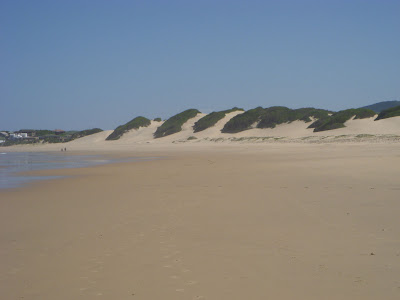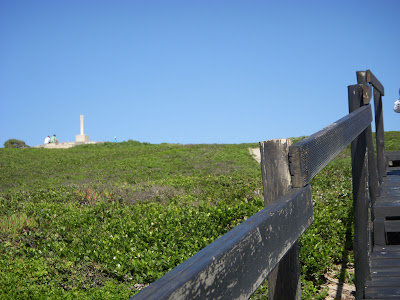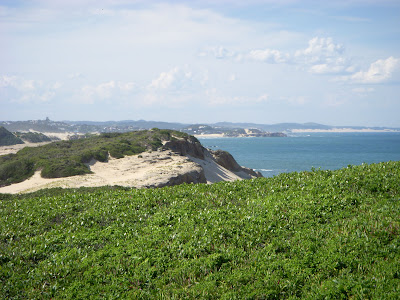It has become politically correct in South Africa since 1994 to disparage the European settlement of this country. Given the horrors of apartheid, this is understandable. But the first arrival on these shores of white people over 500 years ago was an inevitable product of the voyages of discovery. And the first of those to “discover” South Africa – or rather a sea route around it to the East – was Portuguese navigator Bartholomew Dias. And the furthest east he came was a point between Port Elizabeth and East London – another historic, nay iconic, first for the province. Earlier this year my family and I visited the site.

A website, South African History Online, gives some background to Dias's journey. It states quite categorically that Bartolomeu (or Barthlolmew) Dias was the “first European known to set foot on South African soil”.

Born in 1451, the site says the “first mention of his career as ship captain is in an account of an expedition sent by Portuguese King John II to Guinea in December 1481”. Then in December 1487 he sailed down the African coast again, visiting among other places present-day Angola and Walvis Bay, Namibia. “During this voyage, strong winds forced him to sail over a thousand kilometres off-course, and thus he sailed around the southernmost tip of Africa. On 3 February 1488 he landed in Mossel Bay. Dias and his crew sailed further east until they finally turned back in March at, as some historians believe, the mouth of what is today the Great Fish River.

On the return journey, Dias placed three stone crosses on the southern African coast. The first of these, was erected at Kwaaihoek on 12 March 1488. The second was erected at Cape Maclear, west of Cape Point, on 6 June. The third was placed on the Namibian coast on 25 July.

“It is also believed that on their return journey Dias and his crew saw the Cape Peninsula for the first time. It is generally believed that he called it Cabo Tormentoso, or Cape of Storms, and that King John II then renamed it Cabo de Boa Esperanza, or Cape of Good Hope. Not everybody agrees with this, however, and believes that it was Dias himself who gave the Cape of Good Hope its name.”

Of course such voyages were fraught with danger, and the website tells us this one lasted 16 months and 17 days, but that in 1500 he died when his ship disappeared between Brazil and the east African coast, apparently in a cyclone.

So what of the first padrao, or cross, erected by Dias at Kwaaihoek, near the mouth of the Bushmans River? Well, according to this website, it is “seen as South Africa's oldest monument”, no more no less. Of course the politically correct lobby will dismiss this as a Eurocentric view, since there are stone ruins across the country from early African civilisations. But what Dias represents , to me, is the first arrival of Europeans in south Africa, from where our fascinating mixed heritage evolved, with all its attendant ructions and progress.

Incredibly, the remains of the cross were only found in 1938 by Professor E Axelson. The website tells us they were collected and sent to the University of the Witwatersrand in Johannesburg for reconstruction and safe-keeping.

I have found no mention of when the replica was erected on the site, which is a provincial heritage site. Tragically, the marble cross has been badly vandalised and all plaques removed – no doubt for scrap metal. Such is the new South Africa. There is still, I believe, a replica of the cross on the Market Square next to the Port Elizabeth City Hall – donated some time back by the Portuguese government. Of course the new regime is none too happy with this reminder of our colonial past, nor with the statue of Queen Victoria outside the Main Library on the opposite side of the square, which has since been renamed Vuyisile Mini Square, after a struggle figure.



















No comments:
Post a Comment